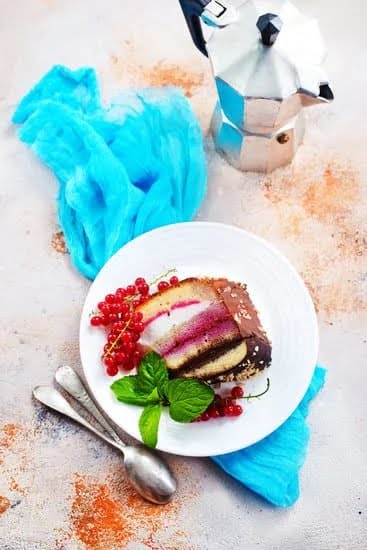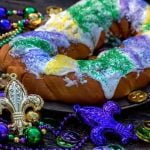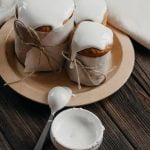Are you looking for a way to add a personal touch to your special occasion? One often overlooked detail that can make a big impact is a beautifully decorated cake knife.
Whether it’s for a wedding, anniversary, birthday, or any other celebration, a decorated cake knife can elevate the presentation of the cake and become a cherished keepsake. In this article, we will explore the importance of a beautifully decorated cake knife and provide you with tips and ideas on how to decorate one for your next event.
When it comes to choosing the right cake knife for decoration, there are many factors to consider. From the type of knife to the materials used, selecting the perfect knife will set the stage for creating a stunning decor. In addition to choosing the right knife, proper preparation is essential for achieving professional-looking results. We will walk you through step-by-step instructions on how to clean and prepare the knife for decorating, ensuring a smooth and even surface.
In order to successfully decorate a cake knife, it’s important to have the right materials and tools at your disposal. From fondant to edible paint and decorative elements, we will provide you with a comprehensive list of everything you need to bring your design vision to life. Additionally, we will showcase various design ideas and inspirations for decorating a cake knife, including patterns, themes, and color schemes that are sure to impress your guests.
Choosing the Right Knife
When it comes to decorating a cake knife, the first step is choosing the right knife. The type and material of the knife will affect how it can be decorated and what design elements will work best. There are several factors to consider when selecting a cake knife, including the occasion it will be used for, personal preference, and practicality.
Types of Cake Knives
There are various types of cake knives to choose from, including traditional straight-edged knives, serrated knives for cutting through dense cakes or frozen desserts, and offset knives that allow for easier cutting at an angle. Each type of cake knife has its own unique features and benefits, so it’s important to consider the specific needs of the occasion and the desired decorative style.
Materials
Cake knives come in different materials such as stainless steel, ceramic, and plastic. Stainless steel is a popular choice due to its durability, resistance to corrosion, and ease of cleaning. Ceramic knives are known for their sharpness and do not transfer any metallic taste or odor to food. Plastic knives are lightweight and often more affordable. Consider the pros and cons of each material when choosing a cake knife for decorating.
Considerations
When selecting a cake knife for decoration, it’s important to think about the size, weight, handle grip, and overall aesthetic appeal. Keep in mind the theme or color scheme of the event where the decorated cake knife will be used – whether it’s a wedding, birthday party, or other special celebration.
Additionally, think about how easy it will be to clean and maintain the decorated knife after use. Taking these factors into account will help ensure that you select the perfect cake knife for your decorating project.
Preparing the Knife
When it comes to decorating a cake knife, it is important to start with a clean and smooth surface. Preparing the knife properly will ensure that the decoration adheres correctly and looks professional. Here are step-by-step instructions on how to clean and prepare the knife for decorating:
1. Clean the Knife: Before you can begin decorating, it is crucial to thoroughly clean the cake knife. Use warm, soapy water to remove any dirt, grease, or debris from the blade and handle. Once clean, rinse the knife with water and dry it thoroughly with a clean towel.
2. Smooth the Surface: To ensure an even surface for decorating, consider using sandpaper or steel wool to gently buff out any imperfections or scratches on the blade of the knife. This will create a smooth canvas for applying decorations such as fondant or edible paint.
3. Handle Carefully: When preparing the cake knife for decorating, handle it carefully to avoid leaving fingerprints or smudges on the surface. It may be helpful to wear cotton gloves when handling the knife during this process to keep it free from oils or dirt from your hands.
By following these step-by-step instructions for cleaning and preparing a cake knife for decorating, you can ensure that your decorations will adhere correctly and result in a beautifully decorated piece that adds a special touch to any occasion.
Decorating Materials
When it comes to decorating a cake knife, having the right materials and tools is essential for achieving a beautiful and professional-looking result. Here is a comprehensive list of the different materials and tools needed for decorating a cake knife:
- Fondant: Fondant is a versatile and easy-to-work-with material that can be used to cover the handle of the cake knife or create various decorative elements such as flowers, patterns, or shapes. It comes in a variety of colors and can be easily shaped and molded to create unique designs.
- Edible Paint: Edible paint is a great way to add color and details to a cake knife. It comes in various colors and can be used to paint intricate designs, patterns, or even add a metallic finish to the knife handle.
- Decorative Elements: To add an extra touch of elegance or personality to the cake knife, consider using decorative elements such as edible pearls, crystals, or glitter. These can be added to the handle or along the blade of the knife for an eye-catching effect.
- Tools: In addition to the decorating materials, there are also specific tools that are useful for decorating a cake knife. These may include fondant shaping tools, small paintbrushes for applying edible paint, piping bags and tips for adding details, and small cutting tools for creating intricate designs.
By using these materials and tools effectively, you can transform an ordinary cake knife into a stunning and unique piece that will make a memorable statement at any special occasion. Next up: design inspiration.
Design Inspiration
When it comes to decorating a cake knife, the design is a crucial element that can truly make it stand out. There are countless design ideas and inspirations for decorating a cake knife, ranging from elegant and sophisticated to fun and whimsical. Whether you’re celebrating a wedding, birthday, or other special occasion, the design of the cake knife can add an extra touch of beauty and charm to the event.
One popular pattern for decorating a cake knife is to incorporate intricate lace designs. This can be achieved by using edible lace molds or by hand-piping delicate lace patterns onto the surface of the knife. The result is a stunning and timeless look that adds an element of elegance to any cake-cutting ceremony.
For those looking for a more whimsical and playful design, consider incorporating colorful confetti or sprinkles onto the handle of the cake knife. This adds a festive touch and can tie in with the overall theme or color scheme of the event. Additionally, using bright and cheerful colors can help create a sense of joy and celebration when cutting into the cake.
Themes such as floral, vintage, modern, or even destination-inspired designs can also serve as sources of inspiration for decorating a cake knife. By incorporating elements like flowers, geometric patterns, monograms, or symbols representing your chosen theme, you can personalize the cake knife to reflect your unique style and personality. With endless possibilities for design inspiration, decorating a cake knife allows you to get creative and bring your vision to life in a beautiful and meaningful way.
Step-by-Step Decorating Process
Decorating a cake knife can be a fun and creative way to add an extra special touch to any occasion. Whether it’s for a wedding, birthday, or other celebration, a beautifully decorated cake knife can make the cutting of the cake even more memorable. In this section, we will provide you with step-by-step instructions on how to decorate a cake knife, from shaping the fondant to adding the finishing touches.
Shaping the Fondant
The first step in decorating a cake knife is to prepare the fondant. Start by rolling out the fondant on a clean and smooth surface using a rolling pin. Make sure to roll it out to an even thickness that is slightly larger than the blade of the knife. Once rolled out, carefully drape the fondant over the blade of the knife, gently smoothing it down to ensure a neat and even finish.
Applying Designs
Once the fondant is shaped over the blade of the knife, it’s time to add designs and decorations. This is where your creativity can really shine. Using edible paint, decorative elements such as edible pearls or flowers, or even intricate piping techniques, you can customize your cake knife to match any theme or color scheme.
Adding Finishing Touches
To complete the decorating process, it’s important to pay attention to any finishing touches that will elevate your design. This could include adding a border around the edge of the fondant, incorporating textured patterns, or ensuring that all elements are securely attached. Take your time with this step to ensure that every detail looks polished and professional.
By following these detailed instructions for shaping fondant, applying designs, and adding finishing touches, you’ll be well on your way to creating a beautifully decorated cake knife that will be admired by all at your next special event.
Tips and Techniques
Decorating a cake knife can be a fun and creative way to add a special touch to any occasion. However, achieving professional-looking results can be a bit challenging without the right tips and techniques. Here are some expert recommendations for decorating a cake knife in an impressive and visually appealing manner.
Using stencils is a great technique for creating intricate designs on a cake knife. Stencils are available in various patterns and shapes, allowing you to easily transfer designs onto the surface of the knife. To use stencils, simply place the stencil on the knife, secure it in place with adhesive or tape, and then apply edible paint or dust over it using a brush or airbrush. Carefully remove the stencil to reveal the beautiful design on the knife.
Embossing is another popular technique for adding texture and dimension to a cake knife. This method involves pressing decorative elements or patterns onto the surface of the knife. You can use embossing tools or molds specifically designed for this purpose to create elegant designs on the handle or blade of the knife. Embossing adds a sophisticated and unique touch to the decorated cake knife.
Working with intricate details requires patience and precision but can result in stunning decorative effects. This technique involves using small decorative elements such as edible pearls, beads, or tiny fondant flowers to create delicate designs on the cake knife. These details can be added using edible glue, ensuring that they adhere securely to the surface of the knife without coming loose.
These tips and techniques will help you achieve professional-looking results when decorating a cake knife. Whether you choose to use stencils, embossing, intricate details, or a combination of these methods, your finished cake knife will surely impress guests at any celebration.
| Tips & Techniques | Expert Recommendations |
|---|---|
| Using Stencils | Use stencils for intricate designs |
| Embossing | Add texture and dimension with embossing |
| Intricate Details | Add delicate designs with small decorative elements |
Display and Care
In conclusion, decorating a cake knife can truly add a special and elegant touch to any occasion. By carefully selecting the right knife, preparing it properly, and investing in the right decorating materials, you can transform a simple utensil into a stunning piece of art. With the design inspiration and step-by-step decorating process outlined in this article, you now have all the tools and knowledge needed to create a beautifully decorated cake knife for your next celebration.
It’s important to remember that proper care and display of your decorated cake knife is essential for keeping it looking beautiful for future use. Whether it’s displaying the knife as part of a centerpiece or storing it for future occasions, following these guidelines will ensure that your work of art remains in perfect condition. By taking the time to clean and store the knife properly, you can enjoy its beauty and elegance for years to come.
Remember that practice makes perfect when it comes to decorating a cake knife. Don’t be discouraged if your first attempt doesn’t turn out exactly as planned – with patience and persistence, you’ll soon become an expert at creating beautifully decorated cake knives. So go ahead and start experimenting with different designs, colors, and techniques, and make your next celebration even more special with a one-of-a-kind decorative cake knife.
Frequently Asked Questions
What Is the Difference Between a Pie Knife and a Cake Knife?
The main difference between a pie knife and a cake knife lies in their design and purpose. A pie knife is typically smaller and has a thin, pointed blade to easily slice through delicate pie crusts. In contrast, a cake knife often has a longer, straight blade that allows for more precise cutting of soft cakes without squishing them.
Should Cake Knife Be Serrated?
Whether a cake knife should be serrated depends on personal preference and the type of cake being sliced. Some people prefer using a serrated cake knife as it can make it easier to cut through certain types of cakes without creating crumbs or causing the layers to shift.
However, for very soft or delicate cakes, a smooth-edged cake knife may be preferred to ensure clean cuts.
What Is the Difference Between a Cake Knife and a Bread Knife?
The key difference between a cake knife and a bread knife is in their design and intended use. A bread knife typically has a long, serrated blade that is ideal for cutting through crusty bread without crushing the loaf.
On the other hand, a cake knife often has a straight or slightly curved blade with either serrated or smooth edges, designed specifically for slicing soft cakes cleanly without tearing them apart.

Welcome to our cake decorating blog! My name is Destiny Flores, and I am the proud owner of a cake decorating business named Cake Karma. Our mission is to provide delicious, beautiful cakes for all occasions. We specialize in creating custom cakes that are tailored specifically to each customer’s individual needs and tastes.





